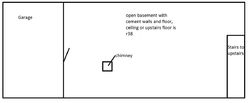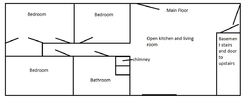- Sep 17, 2013
- 85
I'm looking to purchase and install a stove in my home and I am hoping to draw on the experience of this forums users in selecting one. The home is well insulated. The home is 1040 sq ft with normal ceiling height. The basement (where I would install it) is around 700 sq ft because of the garage. The house has a masonry chimney running up the center of the home. the chimney was previously used for an oil furnace that is no longer in the home. Nothing else currently uses this chimney and the hole that is available to use is 6 1/2 inches round. I would like a stove that could heat the upstairs if necessary by leaving the basement door open. It would be nice to have so meting that could burn for 10-12 hours when full.
Last edited:



